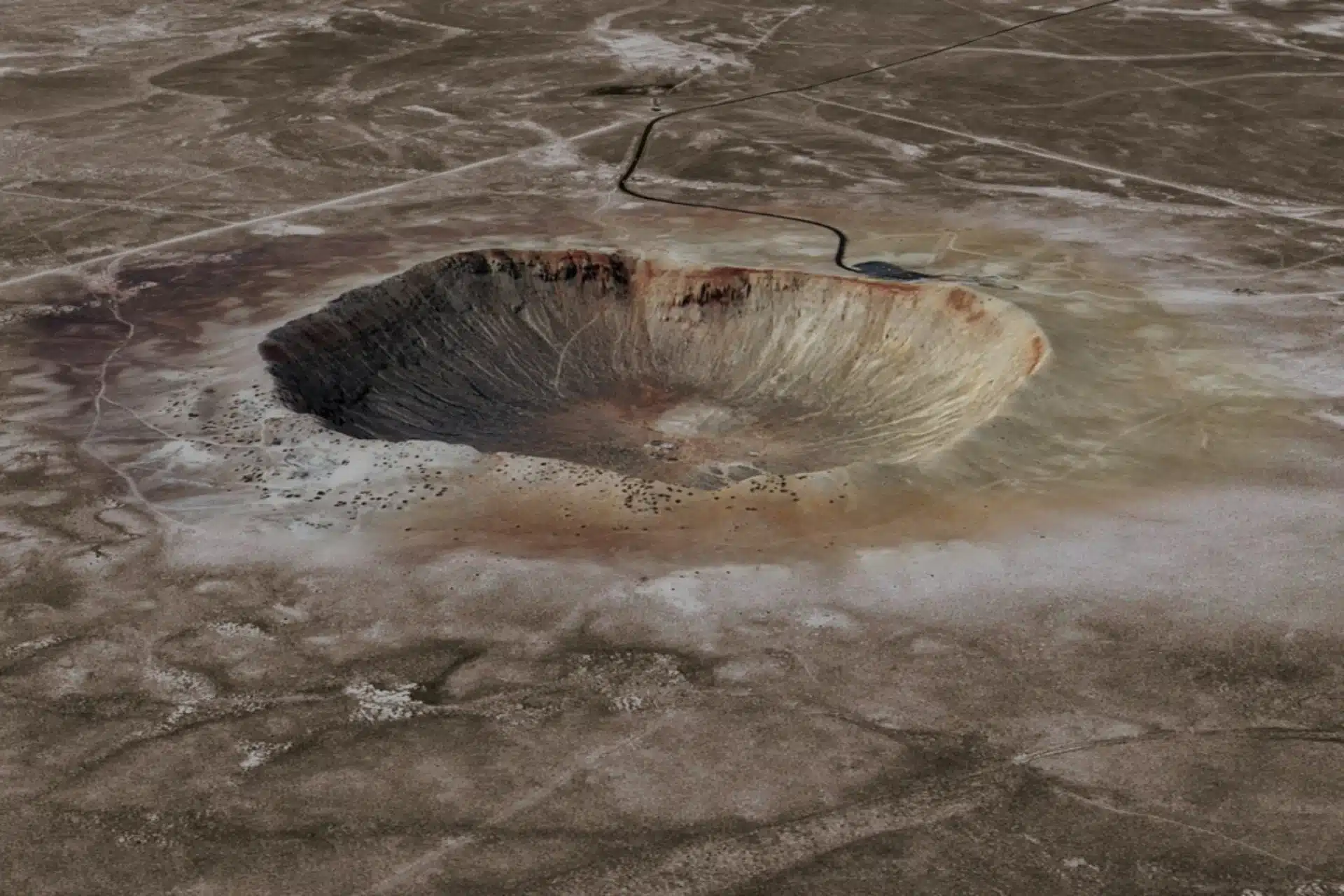Meteor Impact Potentially Created Grand Canyon Formation

A recent study suggests that a meteorite impact in northern Arizona may have triggered a significant landslide in the Grand Canyon approximately 56,000 years ago. This geological event is believed to have altered the course of the Colorado River and led to the formation of a now-extinct paleolake. Researchers discovered driftwood and lake sediments in Stanton’s Cave, providing evidence that the river was once dammed by a rockfall, likely caused by seismic shockwaves from the Meteor Crater impact, located over 100 miles away. The findings were published on July 15 in the journal Geology.
Evidence of an Ancient Lake
The research team from the University of New Mexico utilized radiocarbon dating and geological analysis to trace the origin of the driftwood found in Stanton’s Cave. Their findings indicate that an ancient lake formed after a powerful landslide blocked the Colorado River. This landslide is thought to have been triggered by seismic waves from the Meteor Crater impact, which may have generated an earthquake with a magnitude between 5.4 and 6. According to Karl Karlstrom, a co-lead author of the study, the resulting flood would have been ten times larger than any recorded in the last few thousand years.
The study posits that the landslide created a paleolake stretching 50 miles long and reaching depths of 300 feet. Evidence of beaver tracks found in caves above the river suggests that this significant geological event was closely linked to the Barringer Crater. However, researchers also acknowledge that alternative explanations, such as local earthquakes or rockfalls, could account for the geological changes observed.
Geological Implications
The study highlights the dramatic consequences of the landslide on the Grand Canyon’s landscape. Layers of deposits and driftwood found in cave systems situated over 3,100 feet above sea level indicate that a lake once engulfed a dam in the region. This geological disruption would have had far-reaching effects on the local ecosystem and the hydrology of the Colorado River.
Experts have described the connection between the meteor impact and the landslide as “convincing.” However, they emphasize the need for further data to eliminate other potential triggers for the landslide. Understanding how a single event could reshape such a vast geological feature as the Grand Canyon remains a complex challenge for researchers.
Future Research Directions
While the findings provide compelling evidence of a meteor-induced landslide, researchers are keen to explore additional avenues of investigation. Future studies will aim to gather more data to confirm the link between the Meteor Crater impact and the geological changes in the Grand Canyon. This research could involve examining other potential causes of the landslide and assessing the broader implications for understanding the region’s geological history.
The study opens up new questions about the interplay between meteor impacts and geological processes. As scientists continue to investigate these ancient events, they hope to gain a clearer picture of how such occurrences have shaped the landscape over millennia. The ongoing research will not only enhance our understanding of the Grand Canyon but also contribute to the broader field of geology and the study of Earth’s dynamic processes.
Observer Voice is the one stop site for National, International news, Sports, Editor’s Choice, Art/culture contents, Quotes and much more. We also cover historical contents. Historical contents includes World History, Indian History, and what happened today. The website also covers Entertainment across the India and World.

